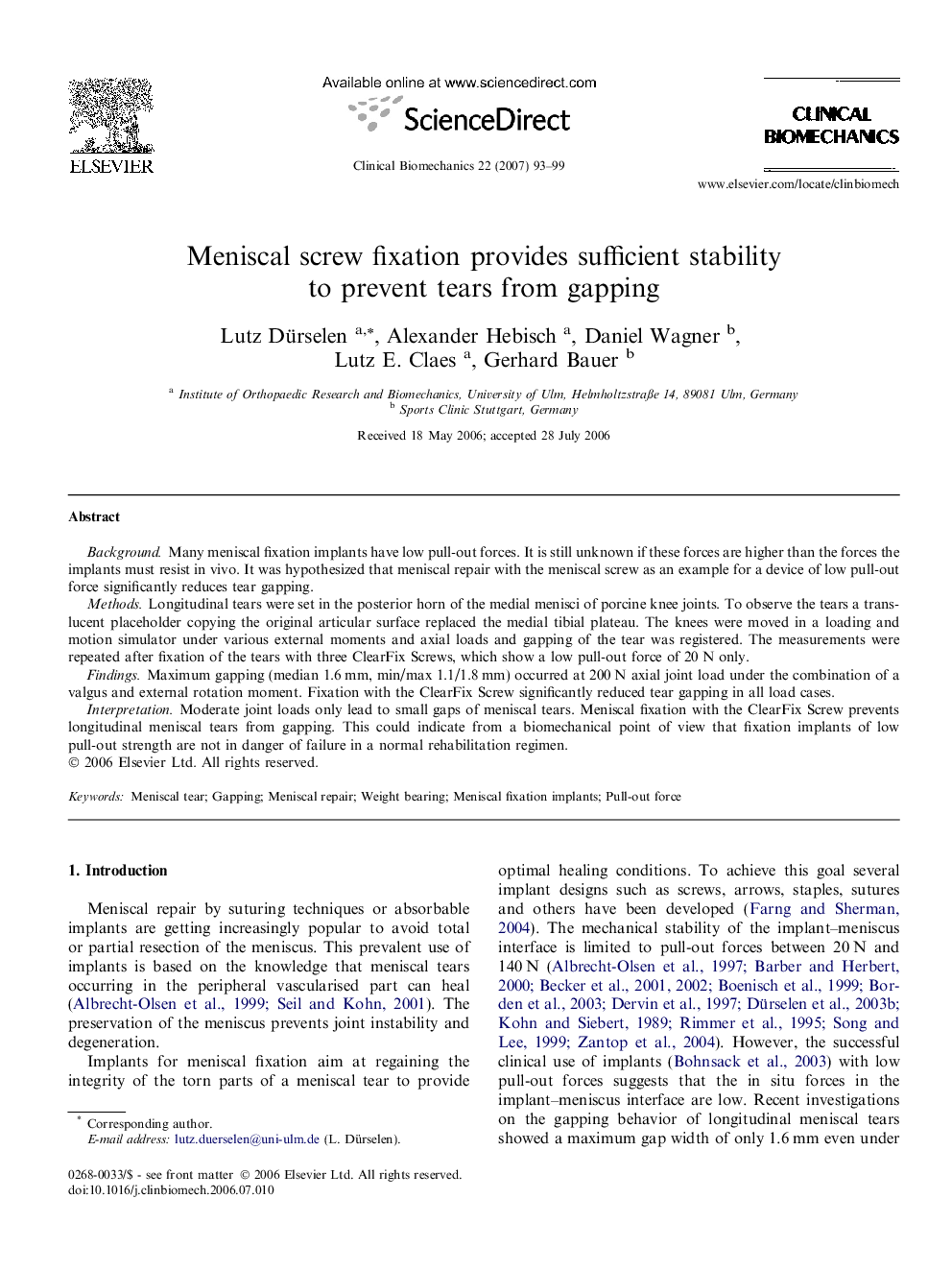| Article ID | Journal | Published Year | Pages | File Type |
|---|---|---|---|---|
| 4051797 | Clinical Biomechanics | 2007 | 7 Pages |
BackgroundMany meniscal fixation implants have low pull-out forces. It is still unknown if these forces are higher than the forces the implants must resist in vivo. It was hypothesized that meniscal repair with the meniscal screw as an example for a device of low pull-out force significantly reduces tear gapping.MethodsLongitudinal tears were set in the posterior horn of the medial menisci of porcine knee joints. To observe the tears a translucent placeholder copying the original articular surface replaced the medial tibial plateau. The knees were moved in a loading and motion simulator under various external moments and axial loads and gapping of the tear was registered. The measurements were repeated after fixation of the tears with three ClearFix Screws, which show a low pull-out force of 20 N only.FindingsMaximum gapping (median 1.6 mm, min/max 1.1/1.8 mm) occurred at 200 N axial joint load under the combination of a valgus and external rotation moment. Fixation with the ClearFix Screw significantly reduced tear gapping in all load cases.InterpretationModerate joint loads only lead to small gaps of meniscal tears. Meniscal fixation with the ClearFix Screw prevents longitudinal meniscal tears from gapping. This could indicate from a biomechanical point of view that fixation implants of low pull-out strength are not in danger of failure in a normal rehabilitation regimen.
